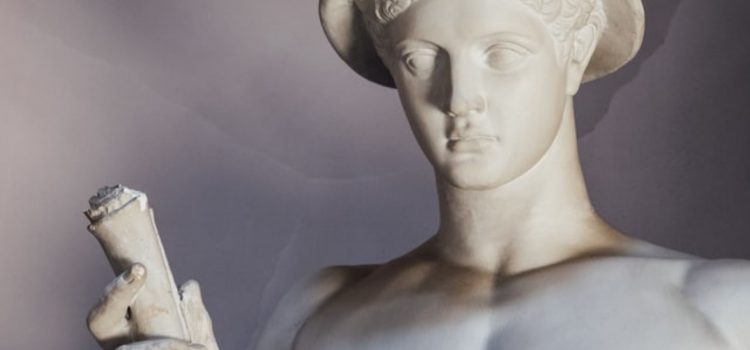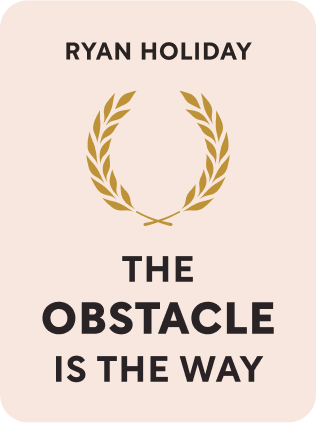

This article is an excerpt from the Shortform book guide to "The Obstacle Is The Way" by Ryan Holiday. Shortform has the world's best summaries and analyses of books you should be reading.
Like this article? Sign up for a free trial here .
What does Ryan Holiday’s The Obstacle Is the Way teach about Stoicism? What is the key message to take away from the book?
Ryan Holiday’s The Obstacle Is the Way is Stoicism applied. The key premise can be distilled into two basic truths: 1) no event is inherently good or bad, and 2) you can choose to see every problem as an opportunity. These truths are Holiday’s foundational beliefs about the world that lead him to conclude that you can transform any problem into an opportunity that benefits you.
Keep reading to learn about the key premise of Ryan Holiday’s The Obstacle Is the Way.
The Obstacle Is the Way: The Timeless Art of Turning Trials into Triumph
Life can sometimes feel like an endless string of problems and setbacks. But what if it didn’t have to be this way? What if, instead of exhausting you and dampening your spirits, every challenge you faced made you tougher and more energized? In The Obstacle Is the Way, Ryan Holiday argues that you have the power to create this kind of life for yourself by changing the way you view your problems.
Holiday explains that choosing to view obstacles in an empowering way is a major tenet of an ancient philosophy called Stoicism, founded in Greece in the third century B.C.
According to Holiday, people throughout history have chosen to follow the Stoic tradition and utilized the same empowering strategy to solve their problems: They find the hidden opportunity in any misfortune and use it as a tool to accomplish their chosen goal. This philosophy has enabled people from every walk of life to overcome enormous obstacles and transform themselves into stronger, nobler people in the process.
| Is This Really Stoicism? It’s a point of contention whether or not The Obstacle Is the Way and other pop-Stoic texts truly fit into the canon of Stoicism. The Obstacle Is the Way doesn’t claim to be a replacement for the original Stoic texts or even to comprehensively summarize them—Holiday prefers to label it as a book “inspired by” Stoicism rather than one that’s “about” Stoicism. This qualifying statement begs the question: How faithful are the ideas in this book to the original Stoic teachings? There’s no single founding document of Stoicism, making it difficult to pin down precisely what the philosophy represents. The Obstacle Is the Way is most directly based on Meditations, a philosophical treatise by the Roman emperor Marcus Aurelius. Meditations, along with other Roman Stoic texts, focused far more on the ethics of Stoic philosophy and their applications to daily living than the original Greek Stoic writings, which focused more on observation and classification of the universe. Holiday writes in the tradition of the Roman Stoics, adamant that Stoic philosophy is meant to be applied. Many ideas common across Stoic writings are present in The Obstacle Is the Way. Stoics across the board agreed that virtue is both the purpose of life and the greatest source of fulfillment. Through self-discipline, a “sage” can transform their life by becoming undisturbed by external events and learning to control irrational passions—two ideas that contribute to our modern concept of the word “stoic.” Holiday’s faithfulness to Stoic writing doesn’t stop there. The three disciplines that form the backbone of Holiday’s book—perception, action, and will—originated in Discourses by Epictetus, another Roman Stoic text that directly influenced Marcus Aurelius. These specific English names were coined by Gregory Hays in the introduction to his translation of Meditations. Holiday doesn’t cover every main idea of Stoicism, however. He’s left out most of the philosophy’s metaphysical, pseudo-religious beliefs, likely because he wants to appeal to a broad secular audience. For example, one central tenet of Stoicism is a belief in logos, a rational godlike force at work creating an ordered universe—and a force that Holiday doesn’t mention. Additionally, Holiday emphasizes how you can use Stoicism to get what you want out of life by amending your approach to problems; however, some argue that this approach undercuts the power of “true” Stoicism, which denies the need for material gain and puts greater emphasis on virtuous living. Holiday would likely make the case that while The Obstacle Is the Way doesn’t paint a complete picture of the Stoic worldview, it doesn’t necessarily contradict it, either. As Holiday himself put it, “Stoicism is a philosophy designed for the masses, and if it has to be simplified a bit to reach the masses, so be it.” |
Truth #1: No Event Is Necessarily Good or Bad
In our everyday lives, we assign meaning to everything that happens to us, judging events to be either good or bad. Holiday explains that in contrast, Stoics view events neutrally—that is, they observe only the facts of any given situation, without judgment.
In Holiday’s eyes, the positive or negative judgments we make about the events in our lives are nothing more than illusions—they’re often detached from reality. Additionally, Holiday argues that these subjective judgments themselves are what cause much of our suffering. Instead of seeing things as they are, we perceive problems that aren’t really there.
For example, imagine you hear a rumor that the company you work for is operating at a loss and several employees need to be fired. You fear you’re going to lose your job and begin to panic. Holiday would argue that the risk of getting fired isn’t the problem—your warped, negative view of the situation, causing fear and panic, is the problem. These feelings don’t necessarily reflect reality—even if you are fired, there’s a chance you might immediately find a better job, and getting fired will have been one of the best things to ever happen to you.
Truth #2: You Can Choose to See Every Problem as an Opportunity
As Holiday explains, the cornerstone of the Stoics’ problem-solving philosophy is that you can find a silver lining in any circumstance in your life, no matter how dire it seems. Even if the only benefit you can find in an obstacle is an opportunity to practice acting virtuously, for instance, by restraining your anger or forgiving a misdeed, you’ve gained something of value.
Once you identify the upsides of a situation, Holiday claims that you can choose to be grateful that it happened. In short, no event is inherently good or bad—your perspective determines whether it’s good or bad. By choosing to claim the gift available in any problem, you remove its ability to hurt you.
For example, if you’re heartbroken by the death of a grandparent, you can use the tragedy as a reminder to treasure the time you still have with your parents. Shared grief may bring you closer to your emotionally distant siblings. You could even use this event as a reminder of your own death and start living life to the fullest.
Additionally, Holiday argues that seeing your problems as opportunities helps you overcome them, as you’ll be more likely to persevere through setbacks and discover hidden solutions. In other words, your perception of a situation determines how you will respond to it. In this way, what you tell yourself about an obstacle significantly influences how easy or difficult it is to overcome.

———End of Preview———
Like what you just read? Read the rest of the world's best book summary and analysis of Ryan Holiday's "The Obstacle Is The Way" at Shortform .
Here's what you'll find in our full The Obstacle Is The Way summary :
- Why you should think of any obstacles as opportunities
- How Stoicism can show you the way to overcome challenges
- How Theodore Roosevelt's struggle with asthma prepared him for future struggles






